Collection Story
Collection History
Have you wondered how The MSU Broad Art Museum’s collection grew to over 10,000 objects? The history of our collection is one that was shaped by numerous individuals, from faculty, staff, and community members to curators and museum directors, who saw the importance of art in our community. The milestones outlined here are only some of the highlights in the ongoing story of the collection’s development. We honor the many people who contributed to the collection over the years, as well as those who worked to create the museum and this new space.
This history was drawn together with contributions from the MSU Broad Art Museum staff and SEEK Graduate Fellow Jada Similton, with Jada’s commentary indicated by * .
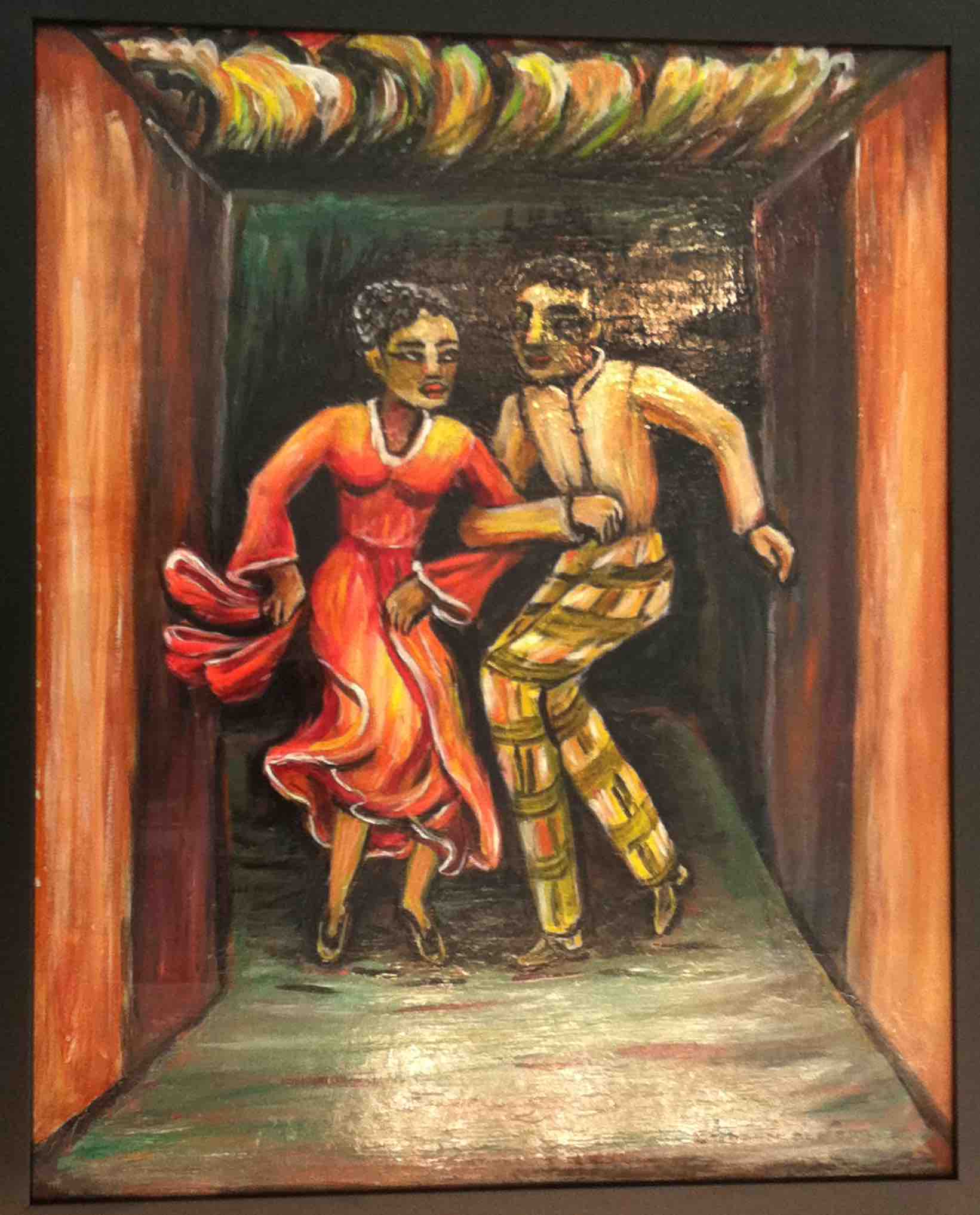
Pictured: Amanda De Leon, Dancing in Harlem, 1940s. Eli and Edythe Broad Art Museum, Michigan State University, gift of Mr. and Mrs. E. K. Perry, 56.1.2
1931 — The Art Department at MSU was founded.
1945 — A gift of three retablos (small devotional paintings), by artists of the Spanish colonial period in the American southwest, formally established the university’s art collection.
1954 — The first work from South Asia entered the collection: a folio from a 17th-century Rajput manuscript that was made in the geographic area now referred to as India.
1950–63 — 176 new works were acquired, bringing the total to 355 works in the collection by the fall of 1964.
1956 — Abraham Rattner’s Potato Farmscape No. 5 was the first American painting in the collection.
1956 — Amanda de Leon, an American born in Spain and raised in Venezuela, was the first woman artist to enter the collection.
* Women artists represent only 16% of artworks featured in this collection and only around 13% of artists in many major US museums.
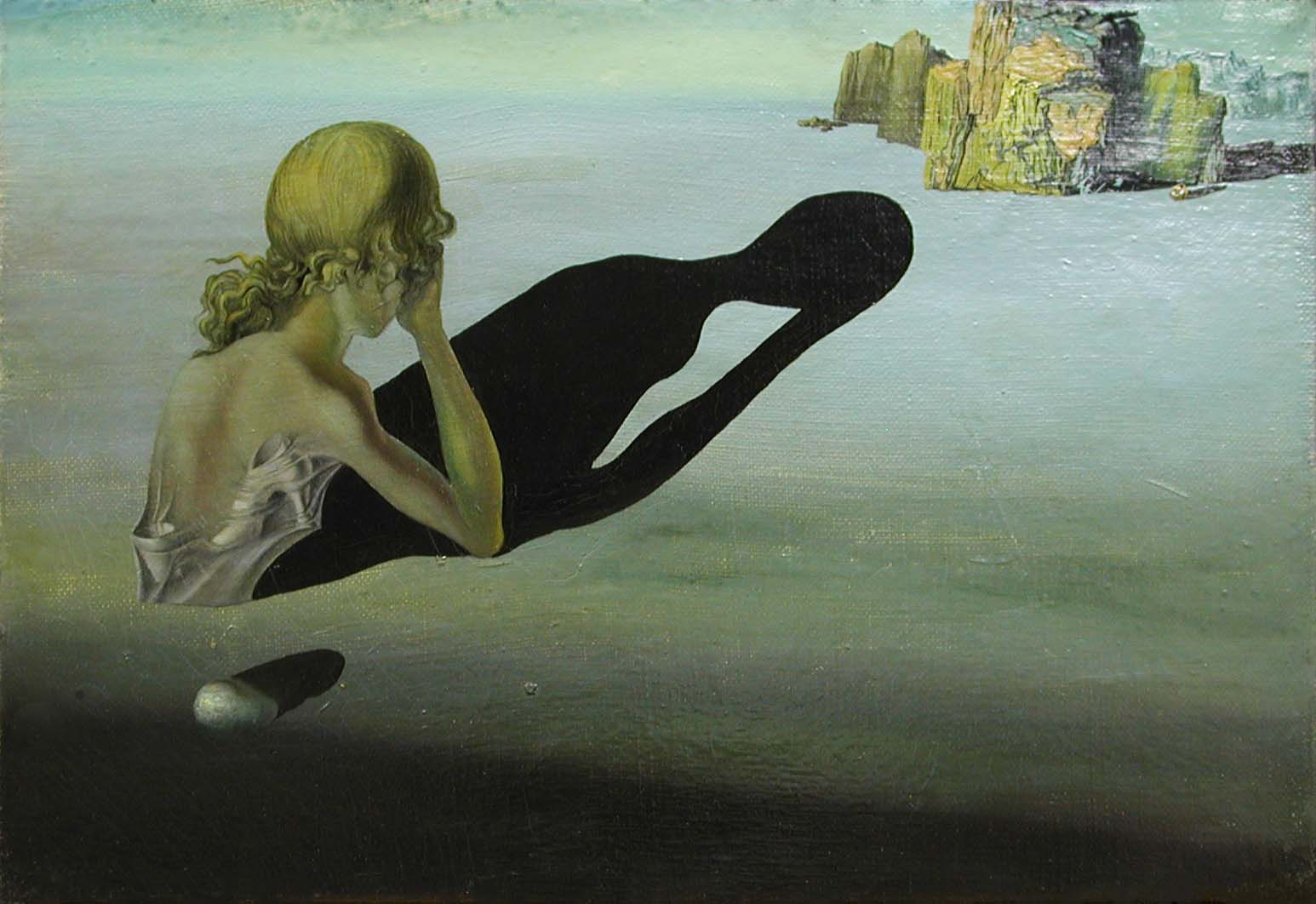
Pictured: Salvador Dalí, Remorse, or Sphinx Embedded in the Sand, 1931. Eli and Edythe Broad Art Museum, Michigan State University, gift of John F. Wolfram, 61.8
1959 — The new Kresge Art Center was inaugurated, which included a gallery for the display of the collection, thus establishing the Kresge Art Gallery.
1959 — Emilio Amero and Rufino Tamayo were the first modern artists from Mexico to be part of the collection.
1960 — Chinese art first became part of the collection through the acquisition of a 19th century portrait and a landscape painting.
1961 — Salvador Dali’s Remorse, or Sphinx Embedded in the Sand (1931) was donated to the museum—one of the museum’s most well-known and requested works of art.
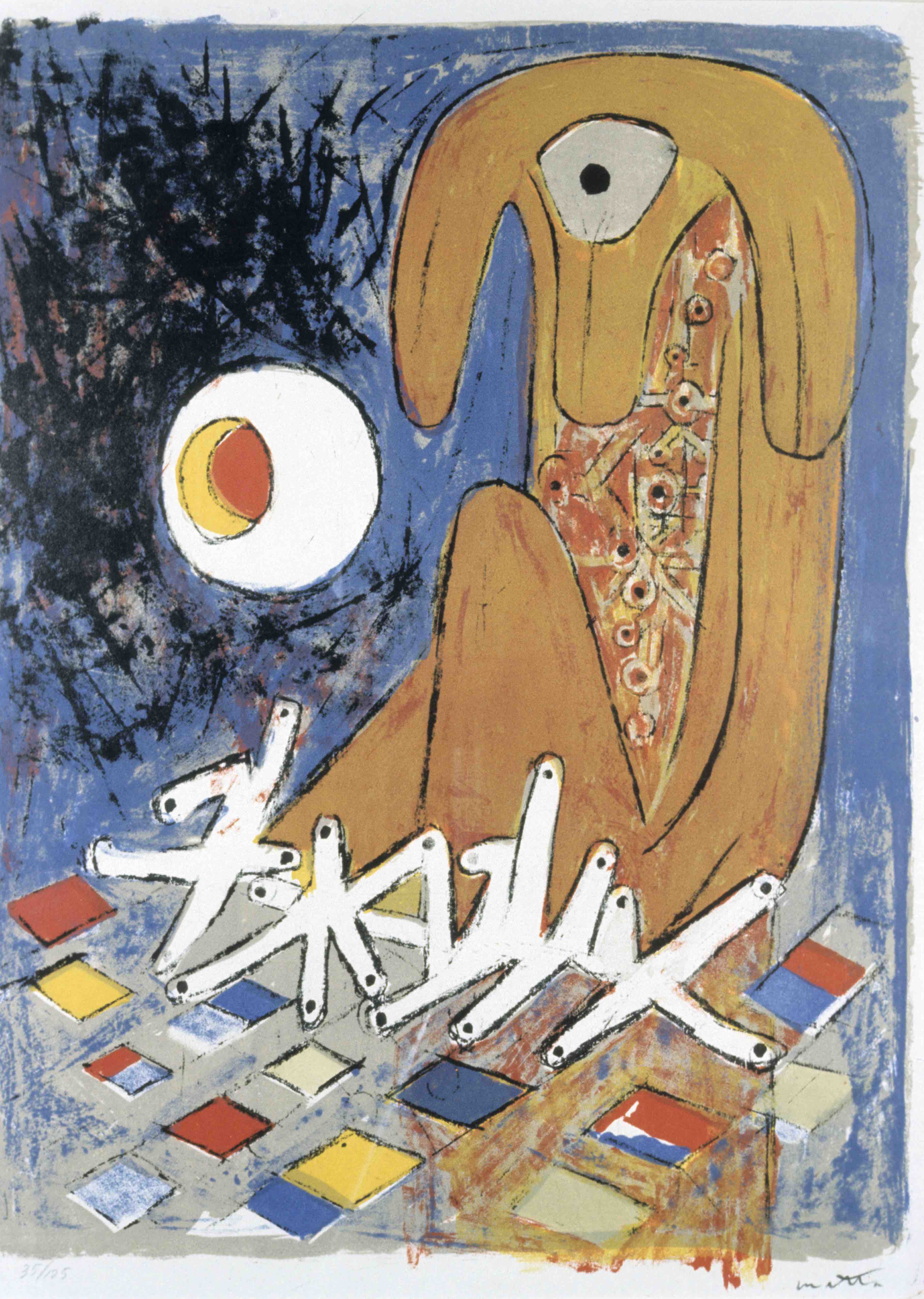
Pictured: Roberto Matta, Le Pianiste (The Pianist), 1956. Eli and Edythe Broad Art Museum, Michigan State University, purchase, 61.2.3
1961 — Roberto Matta was the first Chilean artist to enter the collection.
1962 — Yoshiko Noma and Kumi Sugai were the first modern artists from Japan represented in the collection.
1963 — Jorge Dumas was the first Uruguayan artist to enter the collection.
1963 — Dr. Paul Love was appointed as the first full-time director of the Kresge Art Gallery.
1964 — The first Persian manuscript page was acquired—the collection’s initial expansion into Islamic art.
1964 — The breadth of historical works in the collection expanded significantly with the acquisition of 18th and 19th century ukiyo-e woodblock prints from Japan, 19th and 20th century sculptures made by the Bini and Benin peoples in Nigeria, a head of a Buddha made by a Siamese artist from the Ayuthia period (1378–1767), an Egyptian sculpture of a young boy made between the 3rd and 5th centuries, and more.
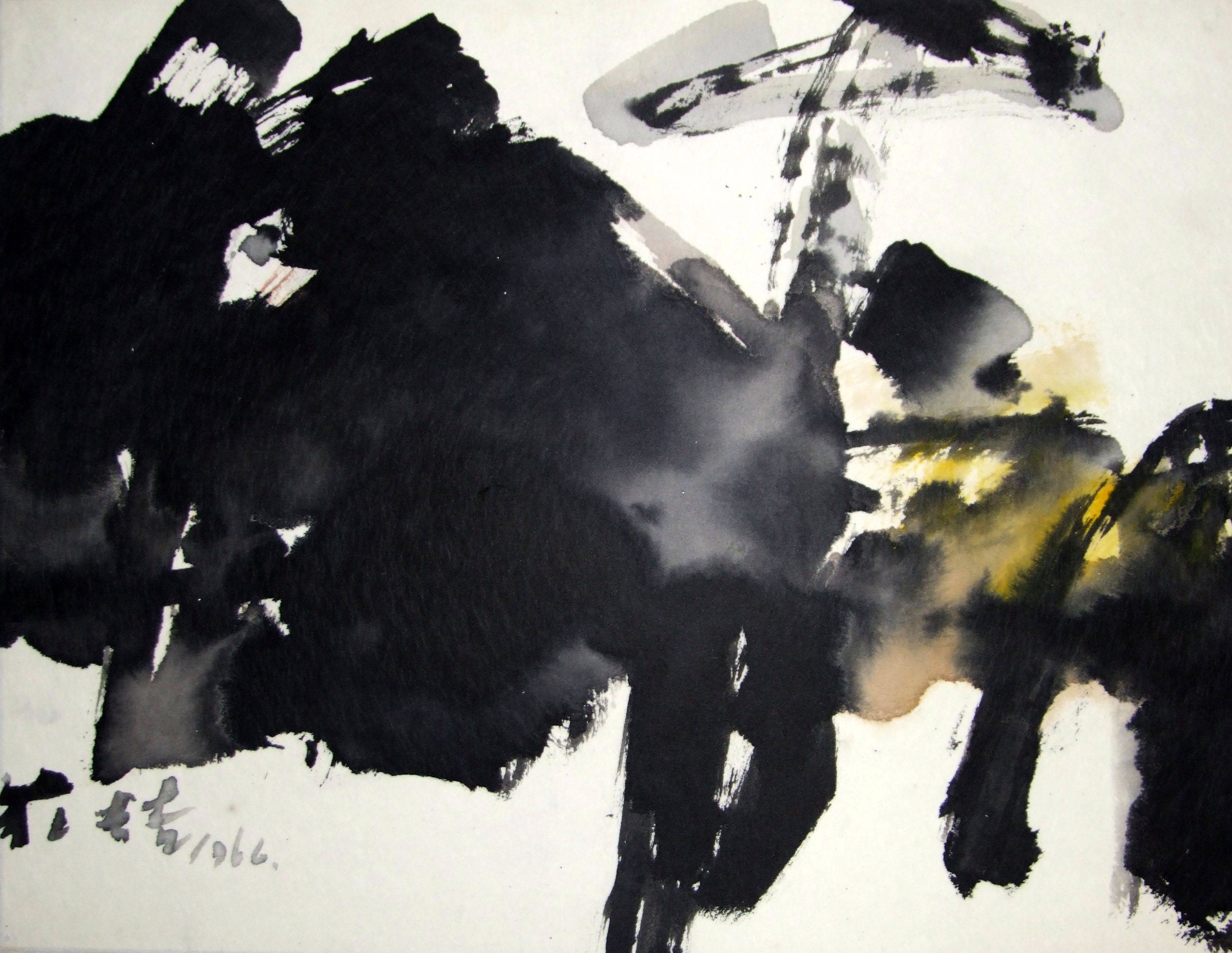
Pictured: Chuang Che, Composition, 1966. Eli and Edythe Broad Art Museum, Michigan State University, purchase, 66.79
1965–68 — With donations from artists and art critics, many of whom were friends with faculty in the art department, the museum’s collection grew to develop strong holdings in Abstract Expressionism and other 1960s artistic movements, including works by Charles Pollock, Morris Louis, Kenneth Noland, Theodoros Stamos, and Helen Frankenthaler. Over 200 works were donated in 1965 alone.
1966 — Chuang Che was the first contemporary artist from China to enter the collection.
1967 — An expansion to the Kresge Art Center included a second gallery for the display of the collection and rotating exhibitions.
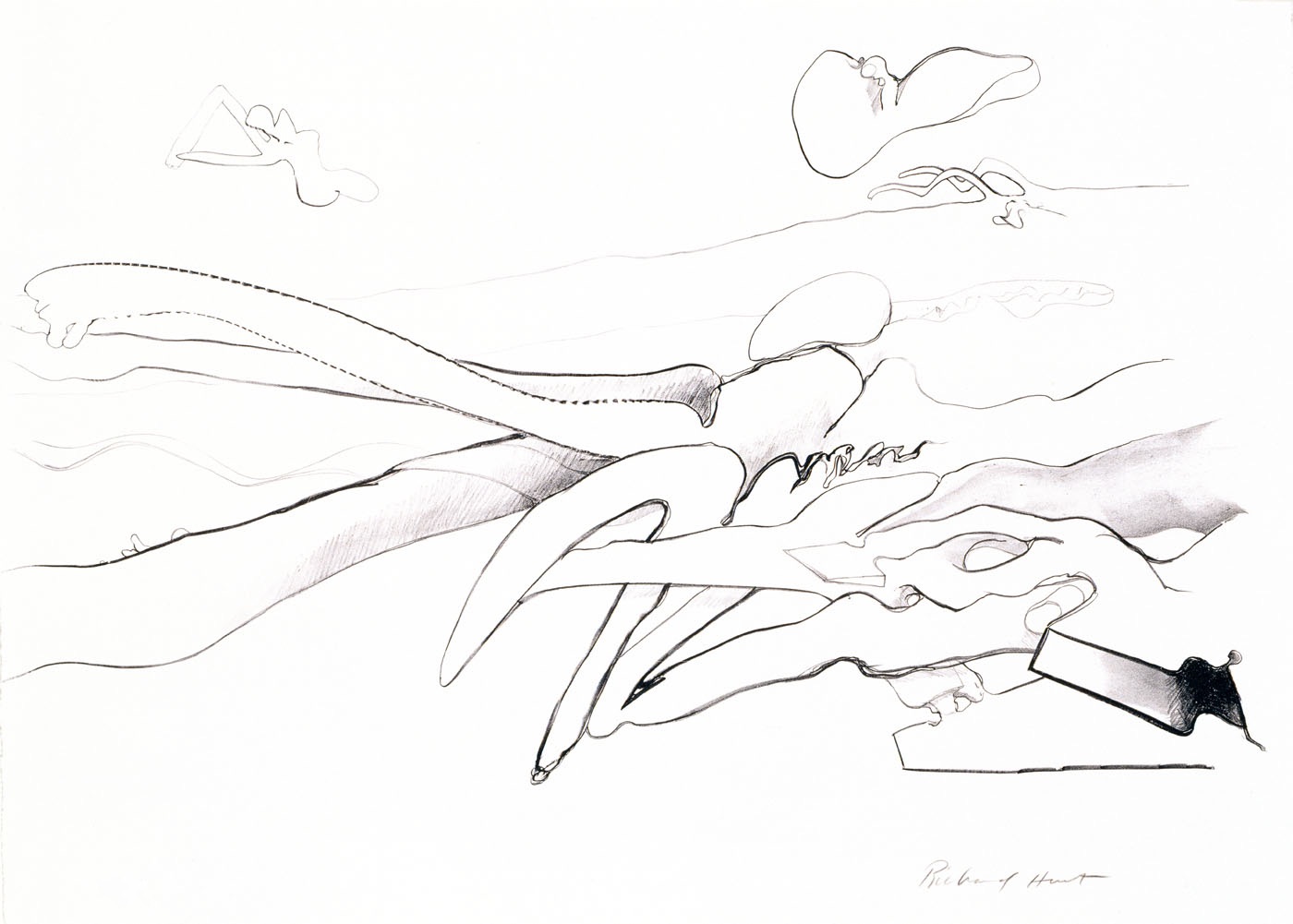
Pictured: Richard Hunt, Untitled #2 (Sculptural Landscape), 1969. Eli and Edythe Broad Art Museum, Michigan State University, gift of Dr. and Mrs. Frederick P. Nause, 72.103.
1967 — The collection’s historical scope expanded further with the acquisition of a Cycladic figure from the 3rd millennium BCE, several Mayan sculptures made between 400–900 CE, and multiple 20th century sculptures from Guatemala.
1971 — The collection grew to 830 objects.
1972 — Richard Hunt became the first African American artist to enter the collection.
* African American artists only represent 1.5% of the known artists in this collection. Of this 1.5%, only 17 are African American women, which means art by African American women represent less than 1% of the entire collection. However, African Americans—descendants of the 12.5 million Africans who were imported from West and Central Africa to forcibly labor and build the US—make up 13.6% of the US population.
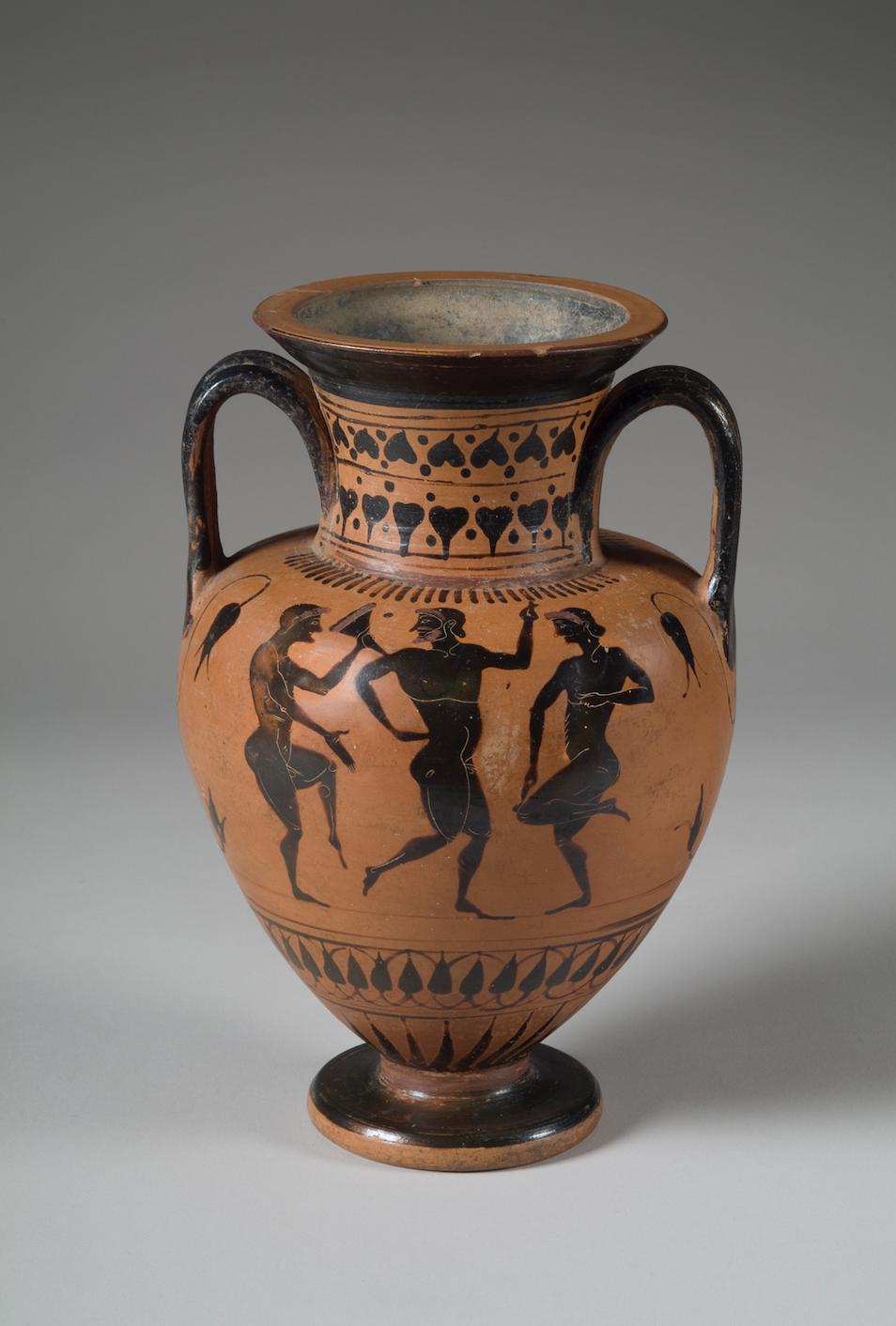
Pictured: Artist unknown, Attic Black-Figure Neck Amphora, ca. 510 B.C.E. Eli and Edythe Broad Art Museum, Michigan State University, purchase, funded by the Friends of Kresge Art Museum, 76.4.
1975 — The Friends of Kresge group was formed with the goal of helping to expand and broaden awareness of the collection
1975 — Joseph Ishikawa succeeded Dr. Paul Love as Director of the Kresge Art Gallery.
1976 — The Friends of Kresge made their first purchase: a sixth century BCE Greek ceramic neck amphora. Over several decades, the group was instrumental in acquiring nearly 90 works of art.
1984 — The MSU Board of Trustees formally recognized the Kresge Art Museum, the second museum on campus after the MSU Museum was inaugurated in 1857.
* The Eurocentrism of art museums often fails to reflect the true diversity of the US as a settler-colonial country founded on the lands of 500+ Indigenous American Nations. In this collection, there are only 9 known Indigenous artists out of approximately 2,250 known makers.
1986 — The collection expanded to approximately 3,000 objects, nearly 70% of which were works on paper.
1986 — Dr. Susan J. Bandes became the third Director of the Kresge Art Museum and the first woman to hold the position.
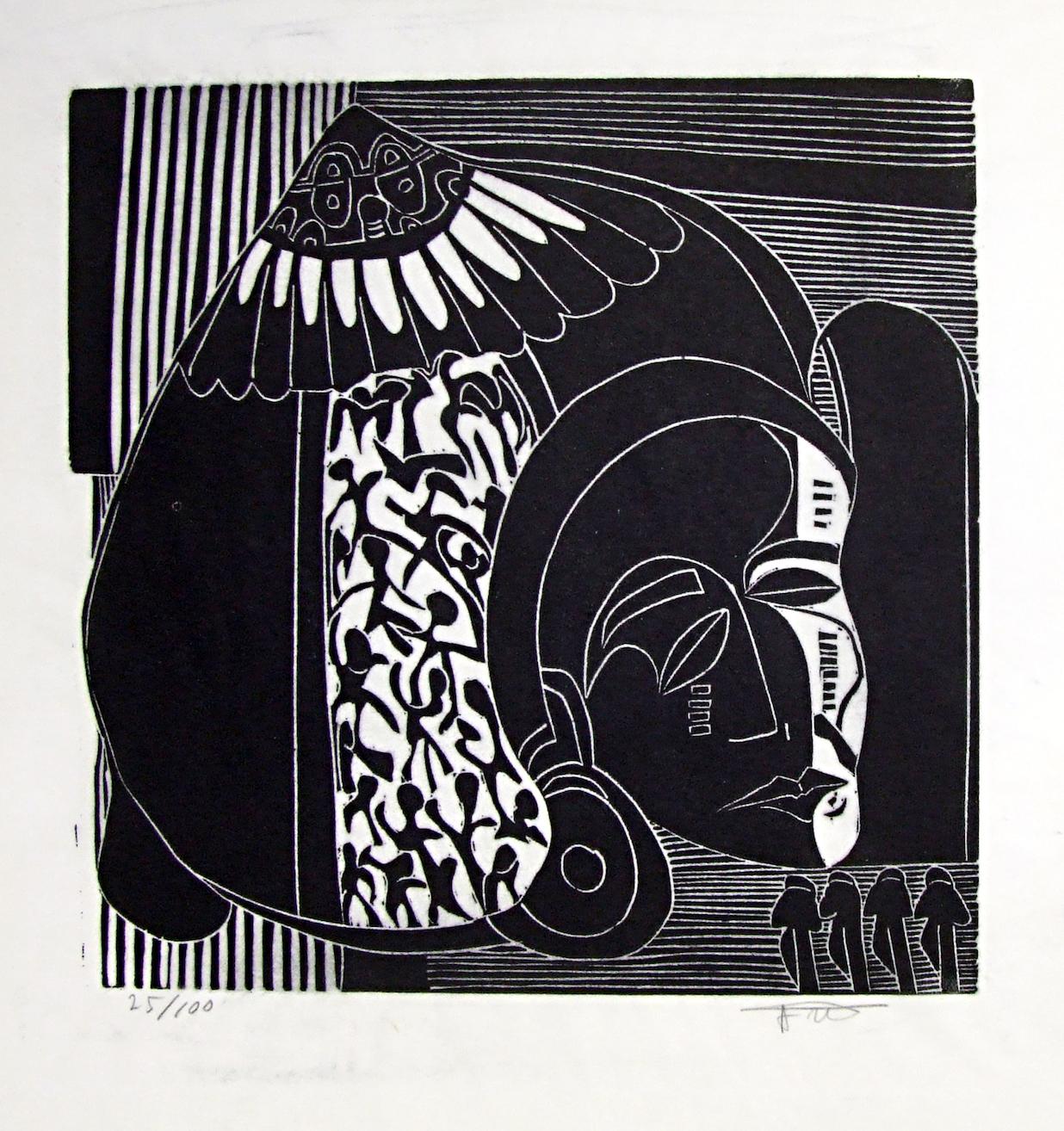
Pictured: Azaria Mbatha, The Mask, 1981. Eli and Edythe Broad Art Museum, Michigan State University, purchase, funded by the MSU Development Fund, 90.3
1990 — Azaria Mbatha, who is from Zululand (now the geographic area known as South Africa), was the first contemporary artist from the African continent to enter the collection.
1995 — Kay WalkingStick of the Cherokee Nation was the first Indigenous artist to become part of the collection.
1999 — Led by David and Ruth Greenbaum, a new, independent committee—the Better Art Museum (or BAM)—was launched in an effort to develop and fundraise for an upgraded and expanded art museum.
2001 — Jacob el Hanani was the first contemporary artist from Morocco to enter the museum’s collection.
2006 — Under the guidance of director Dr. Susan J. Bandes, several Inuit works were acquired both through gifts and collaborations with artist workshops and collectors.
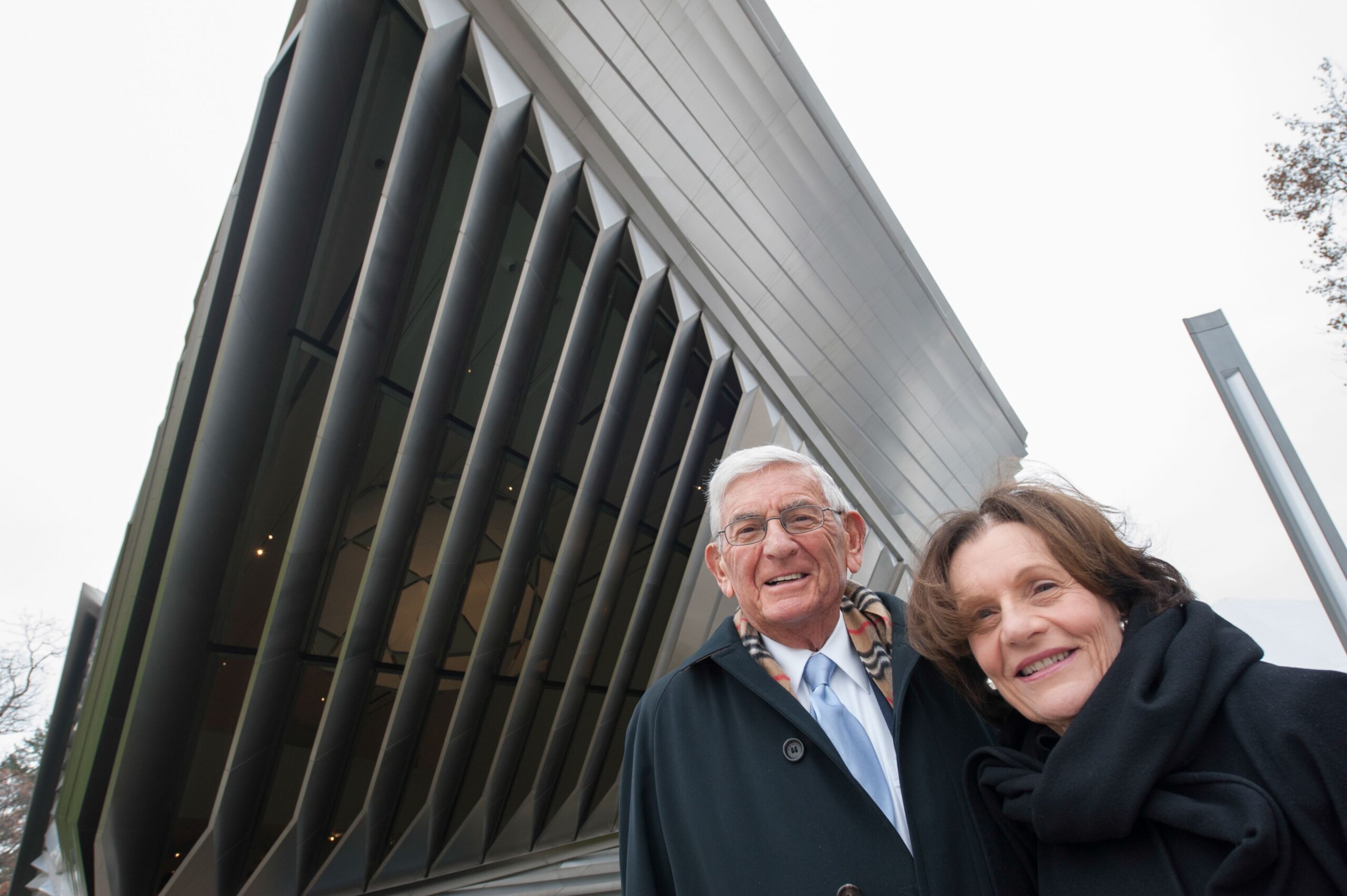
Pictured: Eli and Edythe Broad at the MSU Broad Art Museum. Photo courtesy University Communications.
2007 — Lifelong philanthropists Eli and Edythe Broad announced a $26 million gift to build the Eli and Edythe Broad Art Museum at Michigan State University in support of their vision to create a world-class art museum at the university. Read more about Eli and Edythe Broad.
2008 — An international competition for an architect to design the museum’s new building was launched.
2010 — The museum’s collection grew to over 7,500 works following numerous strategic acquisitions to emphasize women and BIPOC artists made by then-director Dr. Susan J. Bandes and curator Dr. April Kingsley.
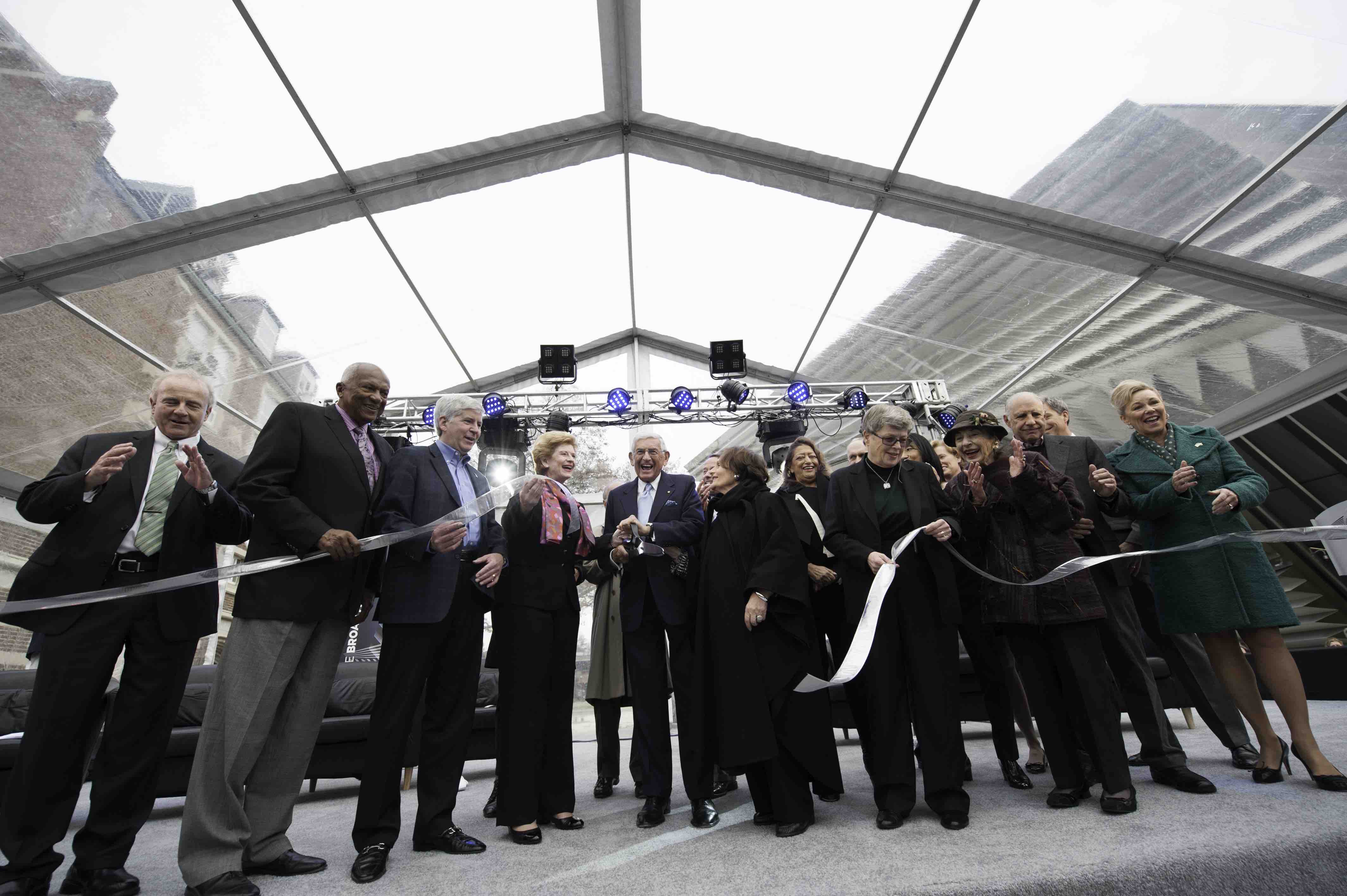
Pictured: Ribbon cutting at the grand opening of the MSU Broad Art Museum on November 10, 2012. Photo courtesy University Communications.
2010 — Construction began on the MSU Broad Art Museum, funds for which were raised by the Better Art Museum committee and the lead gift from Eli and Edythe Broad.
2010 — Dr. Michael Rush was hired as the first director of the new Eli and Edythe Broad Art Museum at Michigan State University.
2012 — The Eli and Edythe Broad Art Museum at Michigan State University opened to much fanfare on November 10, 2012.
2012 — Eli and Edythe Broad donated several important contemporary works to the museum, including the sculpture Containment I (2009) by Roxy Paine featured in the museum’s sculpture garden.
* 87% of all artists featured in 18 of our country’s major museums are male and 85% of them are white. Learn more about the gender disparity in museum collections.

Pictured: LaToya Ruby Frazier, Smiley Standing with His Daughter Shea and His Granddaughter Zion on Their Freshwater Spring, Newton, Mississippi, 2017–19. Eli and Edythe Broad Art Museum, Michigan State University, MSU purchase, funded by the Emma Grace Holmes Endowment, 2023.1.3
2021 — Young Joon Kwak became the first known trans artist featured in the museum’s collection.
2022 — In honor of the museum’s 10th anniversary, the museum initiated a strategic effort to acquire works by its architect, Zaha Hadid, and her studio, Zaha Hadid Design. The museum now has the largest collection of work by Zaha Hadid Design in North America, surpassing 150 objects.
Between 2020 and 2023, Between 2020 and 2023, nearly 100% of all museum purchases were works by women of color.
Today, our collection has more than 10,000 objects.
* As artistic responses to particular cultural moments, the artworks of Black, Indigenous, and Persons of Color (BIPOC) artists in this collection invite us to consider the social events and circumstances that move marginalized people to express and represent themselves on their own terms—free from the biases and stereotypes imposed on them.